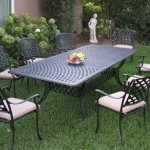Patio Design Ideas: Creating Outdoor Living Spaces
A patio serves as an extension of the home, offering a versatile outdoor space for relaxation, entertainment, and dining. Careful planning in design and layout can transform a mundane area into a functional and aesthetically pleasing environment that complements the existing architecture and reflects the homeowner's personal style. This article explores various patio design ideas, focusing on key elements that contribute to a successful and enjoyable outdoor living space.
Defining the Patio's Purpose and Functionality
The first step in designing a patio is to determine its intended purpose. Will the patio primarily serve as a space for dining, lounging, entertaining, or a combination of these activities? The answer to this question will significantly influence the layout, furniture selection, and overall design choices. For example, a patio intended for dining will require ample space for a table and chairs, while a lounging area may prioritize comfortable seating and a relaxed ambiance.
Consider the number of people who will typically use the patio. A small family may find a compact patio sufficient, while those who frequently entertain guests will require a larger area with ample seating. Furthermore, think about the time of day the patio will be used most often. A patio intended for daytime use might benefit from shade structures, such as pergolas or umbrellas, while a patio used frequently in the evening may require adequate lighting.
Accessibility is another crucial factor. Ensure that the patio is easily accessible from the house, ideally through a sliding glass door or a French door. The pathway leading to the patio should be well-defined and safe, especially at night. Consider the needs of individuals with mobility issues when designing the patio's access points and surfaces.
The surrounding environment also plays a key role. Analyze the existing landscape and consider how the patio can be integrated into the natural surroundings. This might involve incorporating existing trees, shrubs, and flowers into the design, or adding new landscaping elements to create a cohesive and visually appealing space. Consider the amount of sunlight the patio receives throughout the day and choose plants that are well-suited to the specific conditions.
Selecting Materials and Finishes
The choice of materials significantly impacts the patio's aesthetic appeal, durability, and maintenance requirements. Common patio materials include concrete, pavers, stone, brick, and wood. Each material offers unique characteristics and benefits, and the selection should be based on factors such as budget, desired style, and climate.
Concrete is a versatile and cost-effective option that can be customized with various finishes, such as staining, stamping, or scoring. Stamped concrete replicates the look of more expensive materials like stone or brick, while offering the durability and affordability of concrete. Pavers come in a wide range of shapes, sizes, and colors, allowing for intricate patterns and designs. They are also relatively easy to install and maintain.
Stone offers a natural and timeless look, adding a touch of elegance to any patio. Common stone options include flagstone, slate, and limestone. Stone is durable and weather-resistant, but it can be more expensive than other materials. Brick is another classic choice that provides a warm and inviting feel. Brick patios are durable and low-maintenance, but they can be susceptible to fading over time.
Wood decks offer a warm, natural aesthetic. Wood is a popular choice for patios and decks since it's easy to work with and offers a natural look. Wood requires regular maintenance to prevent rot and decay. Consider using composite decking materials, which offer the look of wood without the maintenance requirements.
In addition to the patio surface, consider the materials used for furniture, planters, and other decorative elements. Choose materials that are durable and weather-resistant, such as aluminum, teak, or wrought iron. Fabric cushions and pillows should be made from outdoor-rated materials that are resistant to fading and mildew.
Incorporating Design Elements and Features
Several design elements can enhance the functionality and aesthetic appeal of a patio. Shade structures, such as pergolas, gazebos, or awnings, provide relief from the sun and create a more comfortable outdoor environment. Pergolas offer a partial shade solution, allowing for filtered sunlight and ventilation. Gazebos provide complete shade and can be enclosed with screens to keep out insects. Awnings are a flexible option that can be retracted or extended as needed.
Lighting is essential for creating a welcoming and functional patio, especially at night. String lights, lanterns, and spotlights add ambiance and provide illumination for dining, lounging, or entertaining. Consider using low-voltage lighting systems, which are energy-efficient and safe. Landscape lighting can also be used to highlight trees, shrubs, and other landscaping features, creating a dramatic effect.
Fire features, such as fire pits or outdoor fireplaces, add warmth and ambiance to a patio. Fire pits provide a casual gathering space for friends and family, while outdoor fireplaces create a more formal and elegant setting. Ensure that fire features are installed safely and comply with local regulations. Consider using gas-powered fire features, which are convenient and easy to operate.
Water features, such as fountains or ponds, add a sense of tranquility and relaxation to a patio. The sound of running water can be soothing and can help to mask unwanted noise. Fountains come in a variety of styles and sizes, from small tabletop models to large freestanding structures. Ponds can be stocked with fish and aquatic plants, creating a miniature ecosystem. Ensure that water features are properly maintained to prevent algae growth and other problems.
Plants and landscaping are essential for creating a visually appealing and inviting patio. Choose plants that are well-suited to the specific climate and growing conditions. Consider using a variety of plants with different textures, colors, and heights to create visual interest. Container gardening is a great way to add plants to a patio, especially in areas with limited space. Consider using herbs and vegetables in containers, adding both beauty and functionality to the patio.
Outdoor kitchens are becoming increasingly popular, allowing homeowners to prepare and cook meals outdoors. An outdoor kitchen can range from a simple grill and countertop to a fully equipped kitchen with a sink, refrigerator, and storage space. Consider the available space and budget when designing an outdoor kitchen. Ensure that the kitchen is properly ventilated and equipped with the necessary utilities, such as gas and water.
Privacy screens can be used to create a more secluded and intimate patio. Privacy screens can be made from a variety of materials, such as wood, metal, or fabric. Consider using plants to create a natural privacy screen. Hedges, shrubs, and climbing vines can provide a beautiful and effective way to block unwanted views.
Furniture selection is another key aspect of patio design. Choose furniture that is comfortable, durable, and stylish. Consider the overall style of the patio when selecting furniture. For example, a modern patio might benefit from sleek and minimalist furniture, while a traditional patio might be better suited for more classic and ornate pieces. Consider using outdoor rugs to define seating areas and add warmth and texture to the patio.
Accessorizing the patio with decorative elements, such as pillows, throws, and artwork, can add personality and visual interest. Choose accessories that complement the overall style of the patio. Consider using outdoor-rated pillows and throws that are resistant to fading and mildew. Artwork can add a touch of sophistication and can help to create a more inviting atmosphere.
Ultimately, the best patio design ideas are those that are tailored to the individual homeowner's needs and preferences. By carefully considering the factors discussed in this article, it is possible to create an outdoor living space that is both functional and aesthetically pleasing.

50 Patio Ideas For The Backyard Of Your Dreams

30 Patio Design Ideas For Your Backyard Worthminer Seating Designs Deck

50 Best Patio Design Ideas For Outdoor And Backyard In 2024 Foyr

Patio Design Ideas Garden Gate

The Best Small Patio Ideas To Eoy This Summer

50 Best Patio Design Ideas For Outdoor And Backyard In 2024 Foyr

Best Patio Design Ideas For Your Home Designcafe

Backyard Landscaping Ideas Garden Design

75 Patio Ideas You Ll Love November 2024 Houzz

Patio Design Tips
See Also








